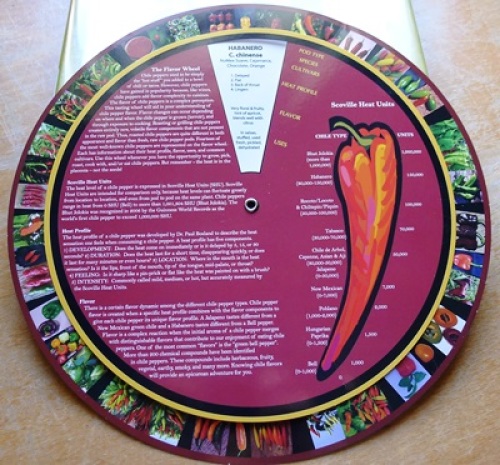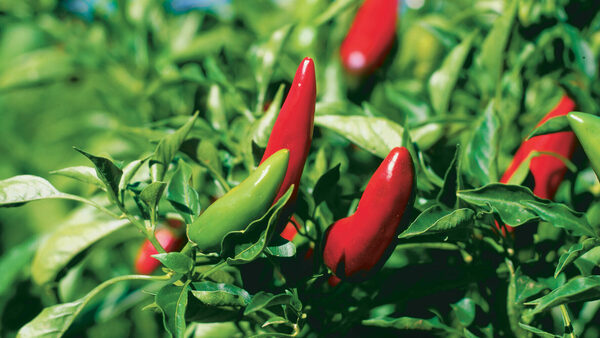
I love to grow and eat almost every kind of chile pepper, but I never cared much for the taste of Habaneros. Now I know why.
The bright orange Habaneros (Capsicum chinense) are made into salsas and hot sauces because of their color, fruity flavor and fiery 80,000 to 1,500,00 Scoville Heat Units (SHU). But it’s their heat profile that turns me off.
I hadn’t realized it before, but each type of chile has a heat profile that’s not all about the heat. Dr. Paul Bosland of New Mexico State University’s Chile Pepper Institute, devised a way to describe the heat sensation caused by different chiles. The intensity of a pepper, measured in Scoville Heat Units, is actually last on the list.
The five components include how the heat develops (immediate or delayed), its duration (lasts a short time or lingers), where it’s located in the mouth (front or back), the kind of feeling it gives (pin pricks or broad strokes), and then its intensity measured in SHUs.
Gardeners can use the Chile Pepper Institute’s Chile Flavor Wheel ($9) to help sort through 14 of the most popular types of chiles, from Aji to Tabasco. Even the Bhut Jolokia, one of the hottest peppers in the world, is featured in the colorful, informative wheel.
Spin the dial to the pepper of your choice and you’ll learn about its pod type, species, examples of cultivars, its heat profile, flavor and different uses. The wheel can help gardeners match chiles to their individual tastes.
The Chile Flavor Wheel was an eye-opener for me. As I turned the wheel to Habanero, I learned what I don’t like: it’s the chile’s delayed, flat heat that lingers at the back of my throat. My preference leans more toward the flavor profile of a Jalapeno because of the rapid, flat, tip-of-the-tongue heat that gradually dissipates.
Of course, there are other factors that can influence a chile pepper’s flavor. Where it’s grown, when it’s grown and how it’s prepared are a few of the considerations. Where it falls on the intensity scale is important, too.
However, as the Chile Flavor Wheel shows, there’s much more to a chile than just its heat.
The Chile Pepper Institute provided a complimentary Chile Flavor Wheel for my use.


















Comments
Log in or create an account to post a comment.
Sign up Log in